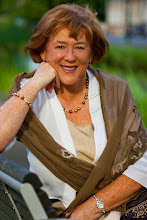I'm back now, tucked once again into suburbia. My windows are wide and long, and rooftops stretch as far as my eyes are prepared to see. This is my familiar patch and, usually, when I return home it does not take long to settle back into familiar rhythms. This time it's more difficult.
For ten days I stared out from small windows set deep in stone. I walked a rugged path where rocks leered like gargoyles and the wild roll of the Atlantic sprayed the air. I heaved bags of turf and logs into a small cottage and banked my wood burning stove with the energy of a stoker. At night a lamenting wind lulled me to sleep and left me with a deeper understanding of banshee mythology. Welcome to Cill Rialaig Artists' Retreat.
Cill Rialaig is based on the end of the Ballinskelligs peninsula and is half-way up Bolas Head. The sense of isolation is strong and the history of endurance etched into the ruins of abandoned cottages that date back to pre-famine times. Sheep graze in roofless rooms where children once played ―and the flaking remains of old settle chairs bear witness to sturdy lives once lived on this hardy lip of Europe.
Cill Rialaig as it is today
Twenty-one years ago a decision was made to rebuild a number of these cottages and turn what was a deserted and derelict site into a retreat where artists could come and be inspired by the landscape.
Usually, it is easel and paint that preoccupy those who come here but this residency was different – and the clacking of keyboards rather than the swish of a brush was the norm.
Thanks to
a collaboration between Noelle Campbell -Sharp (the founder and driving force
behind the establishment of the artists' retreat) and Listowel
Writers Week, I was one of seven writers offered a residency to stay in this unique location.
Each of us accepted the residency because we had a project in mind: novels to develop, poems to perfect, short stories to sharpen. To go to Cill Rialaig without a project is a mistake. Each resident has her or his own cottage, a fortress of implacable stone that sends out a Do Not Disturb message - and the swirl of turf smoke is the only indication that someone is within and at work.
The
days were quiet and peaceful, a walk up Bolas Head where I battled wind and
rain, and enjoyed the occasional burst of sunshine. Then back to my cottage and
my computer.
At first it was easy to believe that only sheep and the occasional tractor was all that would be seen on such walks. February is a bleak month and the gorse that usually blazes the headland in Spring is only beginning to erupt. The wild primroses and cowslips are still unfurling and the bare hedgerows are as gnarled as arthritic fingers.
So it was the rocks that drew the group of us into a field one day where a monastic settlement - un-excavated and almost invisible to the untrained eye - offered us a glimpse of this remote headland's history. Thanks to the knowledge of an enthusiastic archaeologist we were able to imagine the hermetic lives of monks who, in the seventh century, dedicated their lives to prayer and seclusion on this spot. We discovered crosses that have withstood the ravages of centuries, crosses dating back to that era still inscribed on the weathered stone.
A more recent history of village life was evident in the eight restored cottages. Cottage 6 remains vacant and is used purely as a gathering place for residents to browse and engage with each other. It is fashioned in the style of its time and dedicated to the memory of the seanachi, Seán Ó’Conaill, Cill Rialaig's most famous resident.
Born
in 1853, unable to read or write, Seán Ó’Conaill had a formidable memory and was a natural
talent for story-telling. He was the
entertainer of his day, a weaver of
words and a spellbinder of imagination, recounting legends and folk lore that had been passed down in an oral tradition through the generations.
We gathered one night in Cottage
6 to hear some of those ageless stories. Illuminated only by candlelight and a
roaring log fire, it was easy to sink into an atmosphere where words had a
mesmerising power and the only images to distract us were shadows dancing on walls.
The
weather was conducive to hard work. The Atlantic was mostly sullen and grey but when the sun shone it was
a jubilant blast, as if an artist, heavenly inspired, had dashed a
paintbrush across the brooding landscape.
All
good things come to an end and on the morning of my departure, as I gazed from my tiny bedroom window, I saw a
water colour streak of pink separating ocean and sky. The curve of the wave was lazy and calm as it rode towards shore. This promised to be a jewel of a day.
I packed my possessions, switched off my
computer and raked the dying embers from my trusty, wood-burning stove. As I drove away, the distant islands looked like woodcuts etched against an azure sky. I longed for the energy of
a paint brush that would capture the emerald fields with their speckled sheep, the bulging rocks and turf-brown
peaks, the sapphire glaze of the Atlantic as it reflected the peerless sky and transformed
it into a glittering swell.




No comments:
Post a Comment